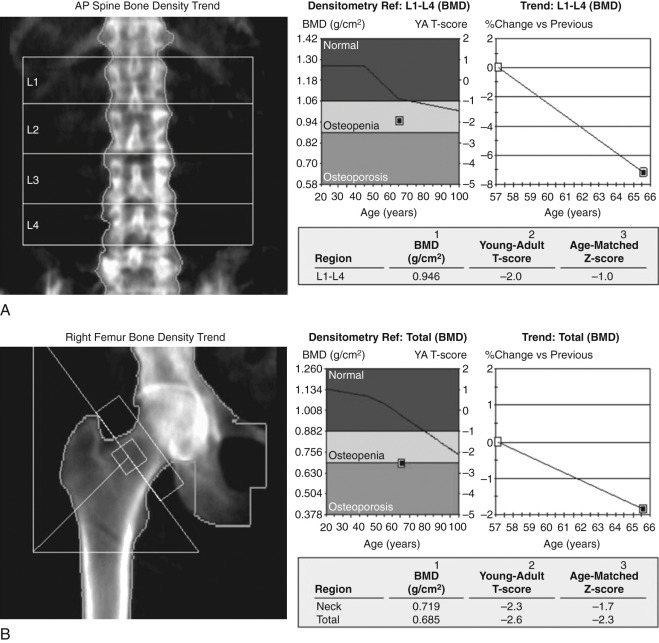Physical Address
304 North Cardinal St.
Dorchester Center, MA 02124
Osteoporosis is characterized by diminished bone density with otherwise normal bone architecture. The main radiographic finding is cortical thinning. Loss of bony trabeculae may also be seen.
Osteomalacia is characterized by normal bone density in the setting of abnormal quality of the bone, leading to excess non-mineralized osteoid. In a growing child, this is referred to as rickets.
Osteopenia is characterized by diffusely increased lucency of bone as seen on radiography or computed tomography (CT). It is sometimes difficult to distinguish between osteoporosis and osteomalacia radiographically.
Osteosclerosis is diffusely increased density of bone as seen on radiography or CT.
Dual-energy X-ray absorptiometry (DXA) is the most widely used bone densitometric technique and the examination of choice for diagnosing and following up osteoporosis ( Figure 48-1 ).

The bone mineral content is assessed by measuring the relative absorption of two distinct energy x-ray beams (usually 70 kVp and 140 kVp). The bone mineral content is then divided by the area measured, yielding bone mineral density (BMD). Note that the unit of measure for BMD is g/cm 2 and is technically not a density measurement.
The lumbar spine (L1-L4 or L2-L4) and the proximal femur (femoral neck, trochanteric region, and Ward's triangle) are assessed on a routine DXA scan. (Ward's triangle is the triangular radiolucent area seen on radiography between the primary tensile, primary compressive, and secondary compressive trabeculae in the femoral neck.) If the patient has the diagnosis of hyperparathyroidism, then the forearm is used instead.
Become a Clinical Tree membership for Full access and enjoy Unlimited articles
If you are a member. Log in here